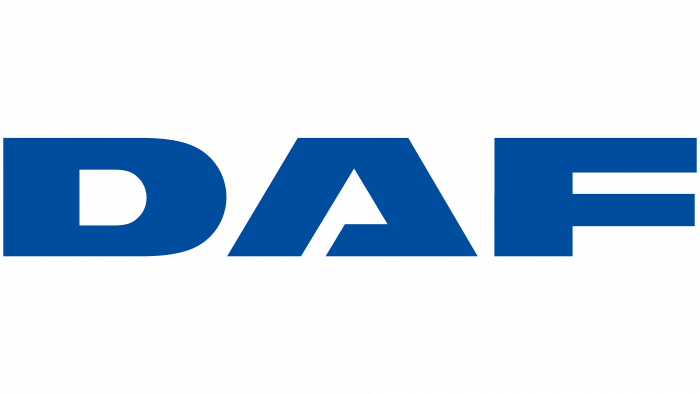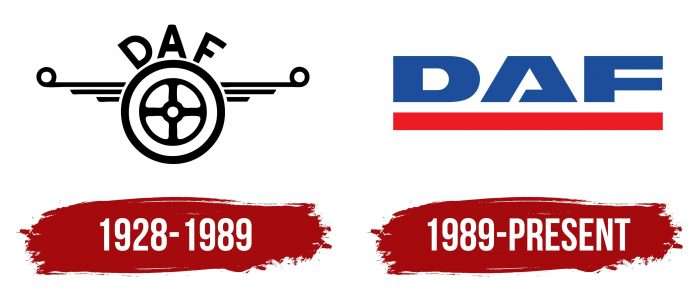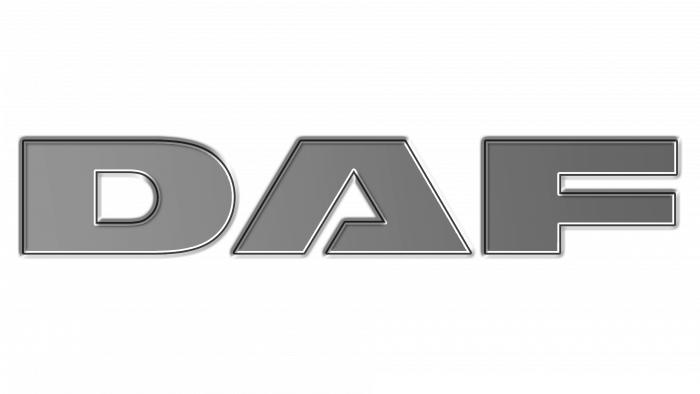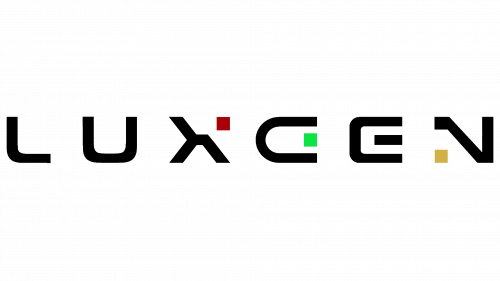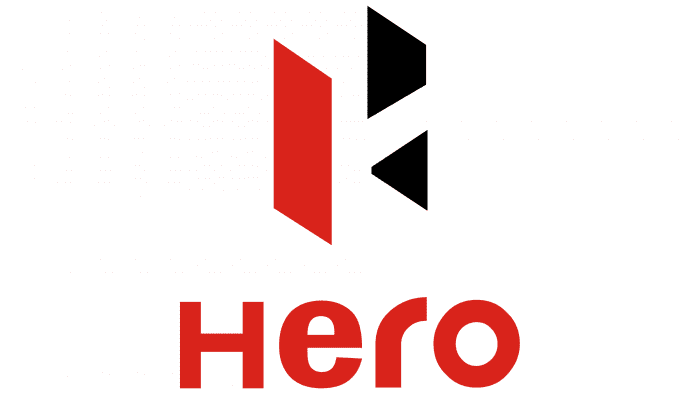When looking at the emblem, there is an association with large-sized vehicles. The DAF logo conveys the power, spaciousness, and reliability of the trucks. Promises the driver’s confidence on the road when transporting goods.
DAF: Brand overview
| Founded: | 1928 |
| Headquarters: | Eindhoven, Netherlands |
| Website: | daf.com |
Meaning and History
DAF is believed to have originated in 1928, although it did not exist at the time. It was a historical period when investor A. H. Huenges helped workshop owner Van Doorne expand the business into a small factory. At first, he was engaged in commercial trailers, then proceeded to modify other people’s vehicles.
The first DAF truck was produced in 1949, and the production of passenger cars began in 1958. The brand name is an abbreviation of the full name of Van Doorne’s Automobile Fabriek, where all the equipment was originally manufactured.
Historically, DAF did not have a well-thought-out identity for a long time. Until 1968, the hoods of cars could be decorated with chrome inscriptions, after which a plate with the model name was attached to the radiator grille. In 1972, only the word “DAF” remained on the grill. A little later, the brand was acquired by Volvo. She began to place her emblem on cars.
However, DAF had an official logo. It changed in 1989, two years after the brand became one with Leyland Motors Limited. When the PACCAR concern bought out DAF, it decided to keep the existing identity.
What is DAF?
DAF is an abbreviation formed from the phrase “Doorne’s Aanhangwagen Fabriek.” It is part of the name DAF Trucks, a Dutch truck manufacturer owned by the American company Paccar. Its history dates back to 1928 when the Commanditaire Vennootschap Hub van Doorne’s Machinefabriek workshop was opened. The first truck under the DAF brand was released in 1949, followed by the first passenger car in 1958.
1928 – 1989
The early version of the logo looked like a wheel because the company started with trailers, which were to transport goods over long distances. This symbol has remained relevant even as the range of vehicles has expanded. It looked like three rings of different diameters, alternating in color (black – white – black). The large inner circle was divided into four parts by perpendicular lines, and in the very center was a smaller circle.
Horizontal stripes were depicted next to the wheel: three on the right and three on the left. They were arranged in pairs and matched each other in length. The ends of the longest lines were curved upward, forming white circles with a black outline. Perfect symmetry was broken only by the word “DAF” written above the rings and having an arch shape.
1989 – today
In 1989, the developers simplified the logo. After the redesign, only one horizontal stripe remained of the complex graphic composition, repainted in bright red. She underlines the brand name, which is now written in big blue letters.
There is another version of the wordmark: with the additional text “A PACCAR COMPANY.” It appeared after the brand changed its owner. The phrase is usually found under the red line, but only PACCAR legal members can use it. All three words are black, while the second is highlighted in bold corporate type.
DAF: Interesting Facts
DAF Trucks NV, often just called DAF, is a big name in making trucks. It started in 1928 in Eindhoven, Netherlands, by Hub van Doorne. It began as a small shop but has become a major truck maker known for smart designs, high quality, and good performance.
- Name Origin: DAF stands for “Van Doorne’s Aanhangwagen Fabriek,” which means Van Doorne’s Trailer Factory. It shows the company started with trailers before making trucks.
- Innovative Gear System: DAF made the “Variomatic” gear system, the first to change gear smoothly without steps. This was a big deal in car engineering, even though DAF later focused on trucks.
- Switch to Trucks: Around the 1940s, DAF decided to concentrate on trucks. Their trucks are now famous for being tough, reliable, and loaded with the latest tech, serving all transportation needs.
- Going Global: DAF has expanded worldwide and joined PACCAR Inc. in 1996, a leader in making high-quality trucks of all sizes.
- Racing History: DAF trucks have been in tough races like the London to Sydney Marathon and the Dakar Rally, proving their strength and performance.
- Green Efforts: DAF is making trucks that pollute less, focusing on fuel efficiency and looking into electric and hybrid technologies.
- Custom Builds: DAF knows transportation needs vary, so it lets customers choose truck features like cabin types, engines, and chassis to meet their needs.
- Top Manufacturing: DAF has one of the world’s most modern and eco-friendly truck plants in Eindhoven. Their focus on quality shows in how they make and finish their trucks.
- DAF Museum: In Eindhoven, the DAF Museum displays the company’s history and achievements, showing off old models to the newest trucks.
- Support Network: DAF has a wide network of dealers and service centers, ensuring truck owners get the support they need and keeping trucks in top shape worldwide.
DAF’s growth from a small workshop to a top truck maker is a tale of innovation, quality, and adaptability. They continue to lead the truck industry with their forward-thinking solutions and commitment to eco-friendliness.
Font and Colors
The modern DAF sign is as simple as possible because it contains only the inscription with an underlined horizontal line. Moreover, the emblem is easy to recognize: it focuses on the brand name and always remains in the same style. This is the main symbol of the automaker, the central part of its identity.
All three letters in the word are individually bold, sans serif. The stylized “A” draws special attention: it looks like a delta sign with a cut-off top and a space in the lower-left corner. Priority colors are red (# D50017) and blue (# 001D7F). The brand guidelines state that the logo can only be placed on a light background, metallic, transparent, gray, or white.
DAF color codes
| Venetian Red | Hex color: | #d50017 |
|---|---|---|
| RGB: | 213 0 23 | |
| CMYK: | 0 100 89 16 | |
| Pantone: | PMS Bright Red C |
| Sapphire | Hex color: | #001d7f |
|---|---|---|
| RGB: | 0 29 127 | |
| CMYK: | 100 77 0 50 | |
| Pantone: | PMS 2746 C |
